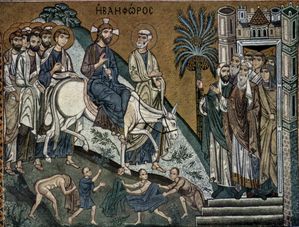
Twelve years ago I sat next to an Indian man at the wedding reception of Eric’s best friend. He claimed that he was trained in the art of palm reading and asked if he could read my palm.
“Ahh. Very interesting,” he said. He furrowed his brows as he read my life line (the wide line encircling your thumb), grimaced even more when he got to my heart line (just above the life line, crossing horizontally to your index finger), and then sighed with a deep breath at my marriage line (just below your pinky).
“You will have many lovers, but be alone all of your short life,” he said (I kid you not) with a straight face.
“Thanks. Very comforting,” I said, and began a conversation with the woman to my right, a cousin of the groom, who confirmed that the Indian guy was an idiot.
Palm readers (even the really bad ones) allege to see the big picture of a person’s life by reading the major lines (life, head, heart, health, fate, fame, marriage, money, sex, spirit, travel, and luck) and how they intersect. All of the information is there, coded into patterns that takes up only a few inches of your hand.
That’s how I think of Palm Sunday–it gives me the big picture. The narrative of Jesus’ bloody crucifixion explains a few things about my life: like that I’m supposed to struggle, because that means I’m seeking spiritual solutions in a temporal world–and when the two brush up against each other, there is always friction (and it’s not always pretty).
Palm Sunday reminds me that only God is constant, nothing else: that the crowds who greeted you with palms in the morning can crucify you by evening–that to rely on being liked or being important for self-esteem will guarantee you a lifetime of insecurity and anxiety, chock full of disappointments–that only the One who created you is able to love you perfectly and unconditionally. Your mom and sisters and husband can try, and some succeed better than others (I won’t say which).
Jesus enters Jerusalem on a high note. He’s given the red-carpet treatment: the crowds cheer for him and wave palms. A few days later, he is betrayed by one of his trusted disciples, is scourged and nailed to a cross, not to mention the humiliation of carrying the immense wooden piece through the same gaggle of people that some hours prior celebrated him as their esteemed leader.
How depressing if that’s all there was.
But we know about the empty tomb, of the Resurrection, that gives meaning to even the worst of tragedies–even to a short, lonely life.
Palm Sunday tells me to not get too bent out of shape about the details: about how many people are reading my blog, or if my best friend and I will ever be close again, or how many years my dogs have before I should begin the doggie heaven conversation with the kids, or how long this combination of meds will last, and if I’ll have another breakdown when they peter out, or if Eric and I will be able to stick together through all of our hurdles, or if I’ll be able to lose the seven pounds I put on this month, or what I should do about my mom’s failing vision, or how long we all have until the planet burns up, and so on.
The Sunday that we get palms and braid them during the very long passion narrative (when the congregation gets to scream out, “Crucify him! Crucify him!” when Pontius Pilate asks if he should release the criminal Barabbas or Jesus, the so-called “King of the Jews”) is God’s way of gently saying, “Chill out. I gotcha covered.”
Because life, and especially life with depression, doesn’t make sense most of the time. There’s an awful lot of sores, confusion, and bloody stuff–like the Way of the Cross.
But supposedly, it’s all good in the end: in the big picture, everything’s cool.
A reader, Kathy, recently posted a quote from Niles Elliot Goldstein’s book, “God at the Edge,” that has helped her through difficult times in her life.
It articulates, for me, the essence of Palm Sunday: that absolutely everything–each and every fall on the way to Calvary, each drop of blood on Jesus’ body, and every tear shed for his death–is part of the God story:
“When we come to understand that everything in our world, including its darker aspects, derives from God, we begin to realize that much of what we perceive as ‘bad’ is, from the divine perspective, simply another piece of the sacred whole. Those experiences in our lives that up close seem so uncomfortable, anarchic, and disorienting are, from a distance, actually essential components of a beautiful and harmonious creation. That which appears as darkness to us may very well be the beacon to our redemption.”
So even (and especially) at those times when we are stripped of all of our dignity, scourged as a result of our illness, robbed of our achievements and personality–those mornings that placing one foot down on the floor is nothing short of miraculous–that even those hours are all good.
Because in the big picture, we can see one palm–the divine hand–holding all of us securely within his grasp, and especially the lonely, hurt, sad, anxious, and depressed (and those with exceptionally bad palm readings) among us.

